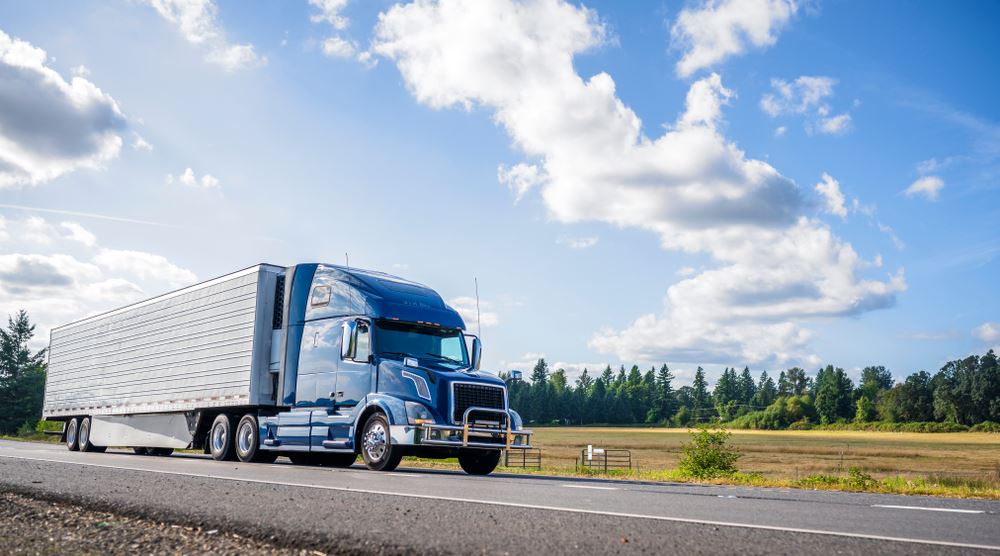
Commercial trucking and transportation is an essential service for all types of industries, companies, and consumers. However, transporting the products people need has risks. According to an analysis of data from the BLS (Bureau of Labor Statistics), driving is the deadliest occupation in the nation.
Using BLS data from 2016, the analysis found:
- There were 918 fatalities from driving occupations in 2016.
- Driving occupations accounted for over 650 more worker fatalities than the second most dangerous job, farming (260 deaths).
- Across all occupations, transportation was the most common cause of worker fatality, accounting for 2,083 deaths in 2016.
Common Risks & Hazards of Truck Driving
With so many large trucks on our roads, keeping everyone safe requires knowledge and management of common risks. These include:
- Long-haul trips / tried driving. Long-haul truckers work an average of 60 hours per week and drive more than 107,000 miles per year, which puts them at risk for fatigue.
- Tight deadlines. Unrealistic delivery deadlines create risks for speeding, aggressive truck driving, Hours-of-Service violations, and driving in unsafe conditions.
- Lack of training. Nearly 40% of truckers say they had inadequate training early in their careers, according to the CDC. Uncertified or improperly trained drivers put everyone on the road at risk.
- Unsafe conditions. Trucks are tall and heavy, often making them susceptible to losing control in wind, rain, snow, and traffic.
- Work zones. Work zones and road closures present many hazards, including lane changes, sudden stops, debris, workers and equipment, and other vehicles.
- Tailgating. Trucks need more time to stop than standard vehicles, which means tailgating truckers can significantly increase the risks of rear-end collisions.
- Inadequate vehicle maintenance. Even a seemingly minor mechanical issue can have serious consequences when heavy trucks are traveling at high rates of speed.
- Driver distractions. Distraction is especially concerning when the driver is behind a big rig. In many states, trucker cell phone use is strictly prohibited.
Truck Driving Safety & Preparedness Tips
What Trucking Companies Can Do
- Control factors that lead to fatigue by structuring schedules to allow enough time for deliveries and following Hours-of-Service rules for mandated rest breaks.
- Create a driver safety program that promotes safe habits and provides truckers with adequate resources and training to perform their jobs safely.
- Address common risk factors that contribute to crashes, including distracted driving, fatigue, and alcohol/substance use, in driver safety programs.
- Maintain vehicles by conducting inspections to avoid problems with truck tire blowouts, faulty brakes, and other hazards.
What Truckers Can Do
- Get enough sleep, pull over to nap when needed, and avoid driving when fatigued, ill, or on medications that may make you drowsy.
- Practice defensive driving by avoiding distractions, scanning ahead for unexpected conditions, and checking mirrors for vehicles that may enter blind spots.
- Signal and brake to alert motorists of the intent to turn or change lanes. Truckers who pull off the road should use flashers, triangles, and road flairs to alert vehicles.
- Slow down for weather or road conditions, including rain, wind, work zones, and curves or ramps. Plan ahead to stay up-to-date on weather conditions, closures, and detours.
- Perform pre-trip safety inspections and ensure cargo is properly loaded and secured.
What Other Drivers Can Do to Stay Safe
- Stay out of blind spots. Large trucks have huge blind spots on all four sides, so avoid them by slowing down or moving ahead and taking extra care when merging. If you can’t see a driver in the truck’s side mirror, assume the driver can’t see you.
- Pass safely. Make sure you can see a trucker in the vehicle mirror, signal your intent to pass to the left, and accelerate to pass quickly. Avoid lingering in blind spots and passing to the right.
- Don’t cut in. Cutting off a truck is dangerous given long stopping distances. If you cut in, you may be in a blind spot and, even if you are visible, trucks may not have enough space to stop.
- Give trucks space. Tailgating a truck puts you in a blind spot and at risk for an underride accident, which is among the most deadly types of crashes.
- Anticipate wide turns. Trucks may swing wide or start turns from a middle lane, so never attempt to squeeze by or get between a turning truck and the curb.
- Be patient. Trucks take time to accelerate and may have speed limiters. Honking and aggressive driving are dangerous and distracting behaviors that put you and others around you at risk.
What to Do After a Truck Accident
It is difficult to eliminate all risks when sharing the road with trucks and tractor-trailers, which is why you should know how to react after a crash. A few important steps to keep in mind:
- Call 911 for emergency help and seek medical attention for injuries.
- Have a law enforcement officer file a police report.
- Gather and organize all contact and insurance information from everyone involved in the accident.
- Seek medical attention, follow up, and listen to your doctor.
- Know your rights – you do not have to speak with a trucking or insurance company and you do not have to accept their first offer.
At The Perecman Firm, P.L.L.C., we know truck accidents can profoundly disrupt a person’s life. That’s why we handle the nuts and bolts of our clients’ legal claims and insurance company communications so they can focus on recovering. Our attorneys also make it a point to educate clients about their rights so they can make informed decisions when it comes time to reach a resolution.
If you have questions about taking legal action after being injured in a truck or commercial vehicle accident, our NYC attorneys are here to help. Contact us 24/7 to request a free consultation.



